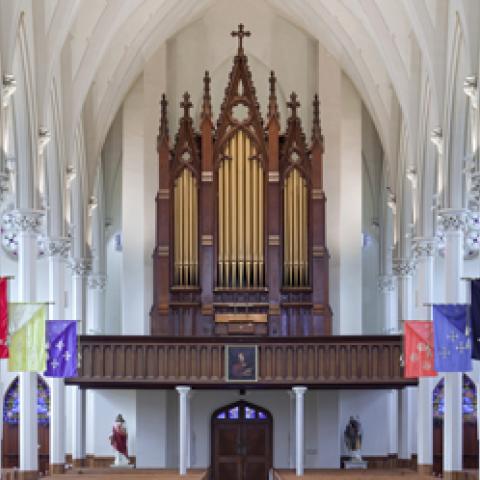The St. John’s Organ Society, in cooperation with the Organ Historical Society and the Bangor AGO chapter, presents A Hook Holiday, a fall tour of vintage Hook organs in Midcoast Maine, October 5–8.
The schedule includes concerts, lectures, and demonstrations on organs built between 1847 and 1909 by E. & G.G. Hook, Hook & Hastings, and George Stevens.
Presenters include Kevin Birch, George Bozeman, David Dahl, Scot Huntington, Robert Newton, Barbara Owen, David Wallace, and others.
The event is a benefit for the St. John’s Organ Society, celebrating the 150th anniversary of E. & G.G. Hook’s Opus 288 at St. John Roman Catholic Church, Bangor, Maine.
For information: 207/942-6941; www.hookopus288.org.
Photo of E. & G. G. Hook, Opus 288 (1860), St. John's Catholic Church, Bangor, Maine, by Len Levasseur
St. John’s Organ Society, OHS, & Bangor AGO to tour midcoast Maine Hook organs Oct 5-8
St. John's Organ Society




